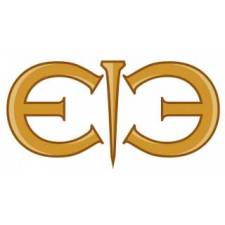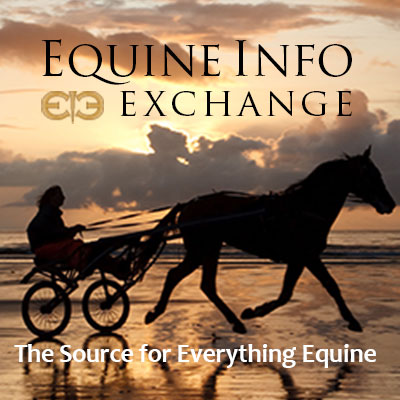
This excerpt is adapted from Newcomer to the Horse World by Andrea Sinner, Esq.,
As I spent more time in Idaho on the lands the Blacks ranched, I began to feel a desire to leave New York City, where I had lived my whole life. Feeling equal parts excitement and anxiety, I decided to move to an old farming area at the end of New York’s Long Island.
Within the first few days after I moved, I drove around, looking for any sign of horses. I called Okie and asked him what he thought I might do to keep horses in my life.
“Tim,” he said. “Do they have any Western barns out there? You could offer to exercise their horses.”
I told him it seemed like, from what I could see, most of the barns were for English riders—sports like dressage, jumping, and polo. But there was a place called Deep Hollow Ranch located in a little town called Montauk, named after the Montaukett Tribe of American Indians.
“They told me they give trail rides,” I said to Okie.
“Good,” he replied. “Go out there and be a trail guide.”
The very next day, I drove to Deep Hollow Ranch to ask for a job that wasn’t in the film and television industry. After parking in a dirt lot, I walked into a tiny office attached to a large barn. Sitting behind an old wooden desk was a tall attractive woman with long black hair and turquoise earrings. She looked up at me.
“Hi, I’m Diane,” she said. “Can I help you?”
I began to experience what would probably now be called imposter syndrome (doubt of my actual skill with horses) and a sudden rush of anxiety. Although it began to dissipate when I noticed that, just like me, Diane was wearing Wranglers, it wasn’t enough to stave off nonstop thoughts of quiet desperation: This is my only chance…. Horses may not be in my future…. What can I say to make her say yes?
“My name is Tim Hayes,” I began, “and I’ve studied with Pat Wyse out in Idaho.”
Diane looked me up and down and said in a flat voice, “I don’t know who that is. How can I help you?”
I had nothing else. I tried to look honest and humble as I replied, “Do you need anyone to help exercise your horses?”
I turned to walk out, trying to leave before Diane could answer my question with a “No.” My thoughts darkened with sadness and failure.
“No,” I heard her say behind me as I reached the door. “But…we need trail guides. Rides go out every day for an hour and a half. Are you interested?”
As I turned back to face her, I mentally reviewed the following facts:
I don’t know enough about horses.
I’m not good enough or confident enough to lead people on trail rides.
There’s no way I can or should be responsible for the safety of other riders and their horses.
If someone has a problem with a horse, I will have no idea how to help them.
This is too risky—probably dangerous.
I’m not qualified, and it’s way over my head.
Then I looked into Diane’s eyes, tried to squint like Clint Eastwood, and said, “Sure.”
Including some public land owned by New York State, Deep Hollow Ranch had close to four thousand acres to explore. Trail rides consisted of going deep into wooded areas on narrow dirt paths until you emerged on a magnificent sandy white beach, overlooking the Atlantic Ocean and across to the coastline of Rhode Island and Connecticut. The ranch kept about a hundred Quarter Horses, was open all year, and employed about fifteen trail guides during the busy summer season. Most were college-age men and women, and they came from everywhere in the country—a few even came from Ireland. And although I was old enough to be their father, I needed to constantly ask them for horse help.
Customers were put on the older, mellow horses. Since the guides were supposed to be “experienced equine professionals,” we rode the horses that still had “issues” that needed to be resolved (in other words, the ones that liked to rear or bolt).
Whenever I rode a horse that resisted my requests, I was always told by the others on staff: “Tim, get after him,” and “Show him who’s boss.” These were euphemisms for kicking hard with spurs or pulling forcefully on the reins. It frightened me, it felt wrong, and I hated doing it.
But I didn’t know what else to do.
I must have taken out hundreds of rides in the ten years I worked as a weekend volunteer trail guide in Montauk. I was kicked, bitten, reared with, bucked off, stepped on, and dragged. However, when I think back to all the saddling, grooming, and interacting on the ground I did with so many different horses, I realize how invaluable every experience was in my horseman’s education. Being good or “getting handy” with horses usually has very little to do with horseback riding. It never occurred to me then that unless I learned to establish a positive mental and emotional connection with horses on the ground, I would be left, like most people, with no alternative but to try and control them with physical force when I got on their back to “show them who’s boss.” And just as with a human adult or child, it would eventually become ineffectual in creating a harmonious or safe relationship.
Being a trail guide not only taught me more about horses, it taught me about myself. It further revealed the importance I gave to what other people thought of me. For example, when it came to getting hurt, I discovered that even factoring in all my different horse-related “accidents,” the most painful experiences were those involving my ego. I can easily recall two memorable episodes involving my attempt to save face as a “professional” trail guide.
The first was getting lost on my very first ride. Although the four thousand wooded acres of Deep Hollow Ranch were surrounded by Long Island suburban civilization, which included an occasional house, no one was more surprised than I was when I realized I had accidentally led my group of eight riders up the driveway of someone’s two-story colonial home. (I was later informed that it was a “first” in the history of Deep Hollow Ranch trail guides.) Before any of the riders following me had the chance to exclaim, “Hey, Tim, is this the right way?” I looked back at the group and in my most commanding John Wayne voice yelled, “Follow me! This is where we always make a U-turn and head out toward the beach.”
For the rest of the ride all I thought about was what I would say to Diane when one of the customers mentioned the “pretty house we rode by on the trail.”
No one ever did.
 Horses, Humans, and Love: Powerful Lessons from the Herd―Compassion, Self-Worth, True Partnering, Heartfelt Parenting
Horses, Humans, and Love: Powerful Lessons from the Herd―Compassion, Self-Worth, True Partnering, Heartfelt Parenting
BUY NOW on Amazon
Paperback | Kindle
This excerpt is adapted from Horses, Humans and Love by Tim Hayes and is reprinted here with permission from Trafalgar Square Books.
You can find more interesting reading in our sections for Books and Trail Riding. While you're here, check out our Curated Amazon Store for everything you need for a happy horse and rider.












